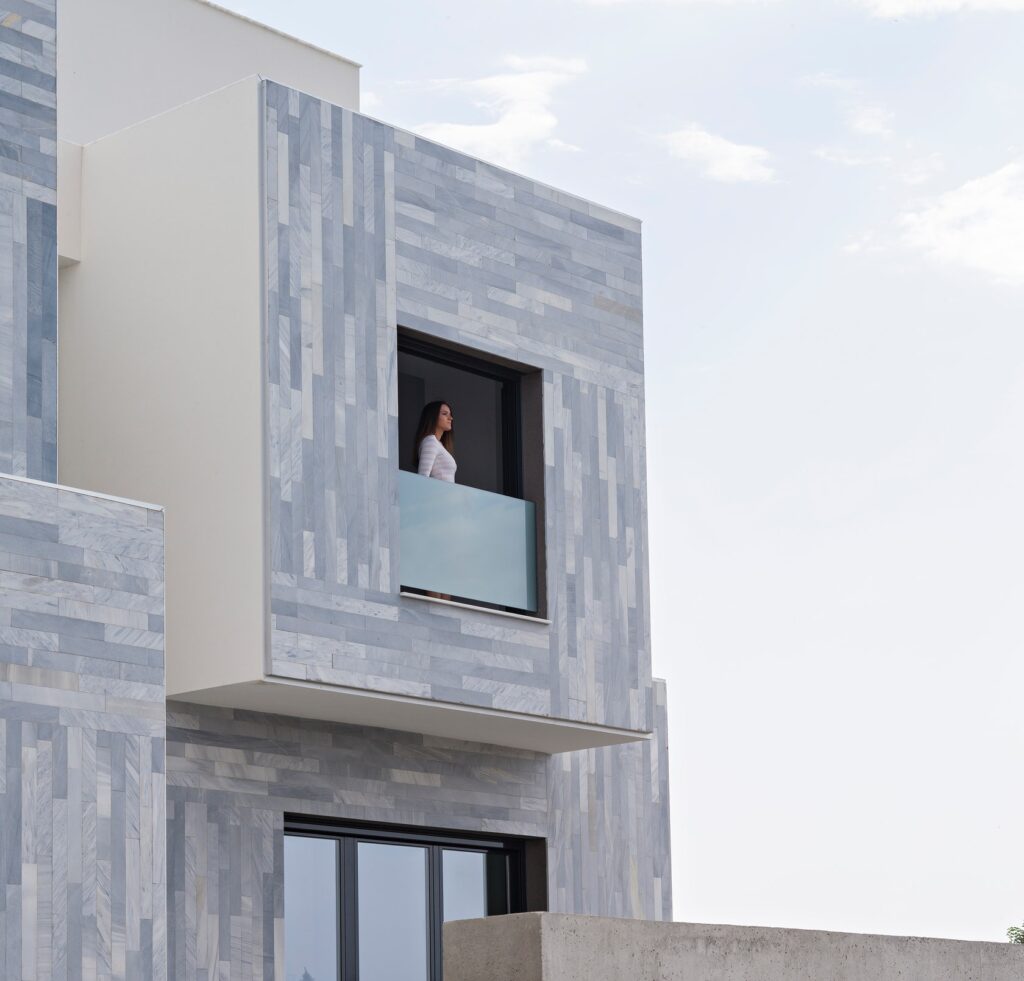
Stone has been used as a construction material since the beginning of time since it is naturally occurring. The main advantages of stone cladding are its strength, longevity, and aesthetically pleasing appearance. With a plethora of options for enhancing the appearance of any exterior or interior, having a solid grasp of stone cladding is critical to ensure its utilisation within any project.
Basic Categorization
To establish a safe and dependable stone cladding fastening system, it is critical to thoroughly examine the consequences of natural stone weight and qualities early in the design process.
Traditional Handset Cladding
Traditional handset cladding is a long-standing building method in which natural stone is attached to a pre-built underlying framework. These elements work together to form a building’s outer envelope.
The weight of the hefty stone is transferred to load bearing fasteners located at the floor plates in traditional handset cladding systems. These systems must have both compression and movement joints. Granite, limestone, and sandstone are the most frequent natural stone varieties utilised with classic handset façade cladding methods, however marble and slate are also employed.
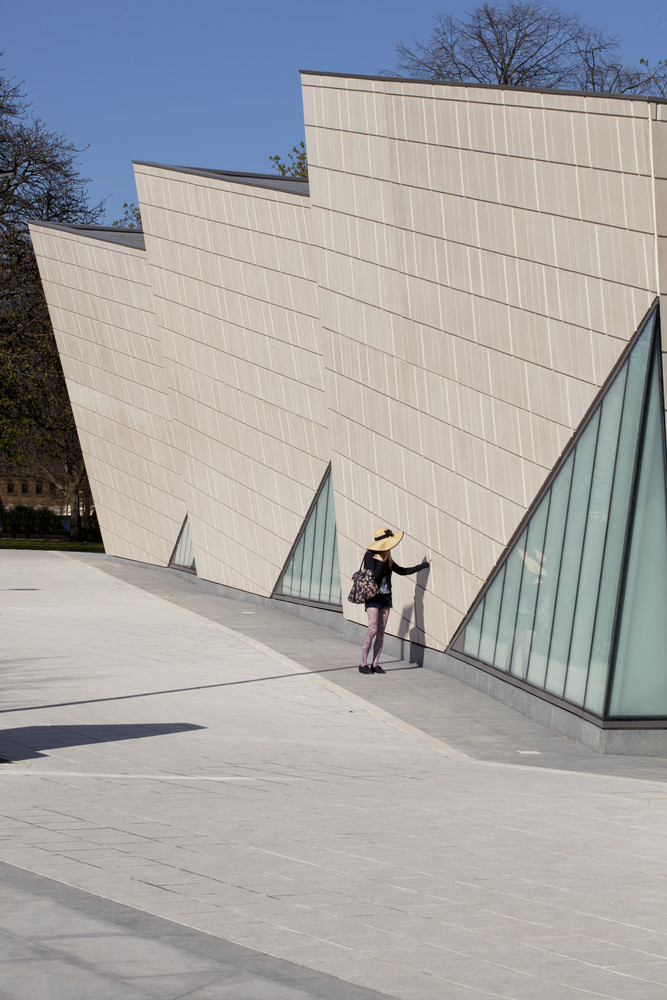
Rainscreen Principle
Natural stone is gaining increasing popularity as a material harnessed to create dramatic and high-performing rainscreen façades. Stone panels are installed onto the building face using either a concealed system or an exposed clip system. Stone-clad rainscreen façades are most commonly back-ventilated and consist of an interior drainage cavity, which helps swiftly remove any moisture that may seep behind.
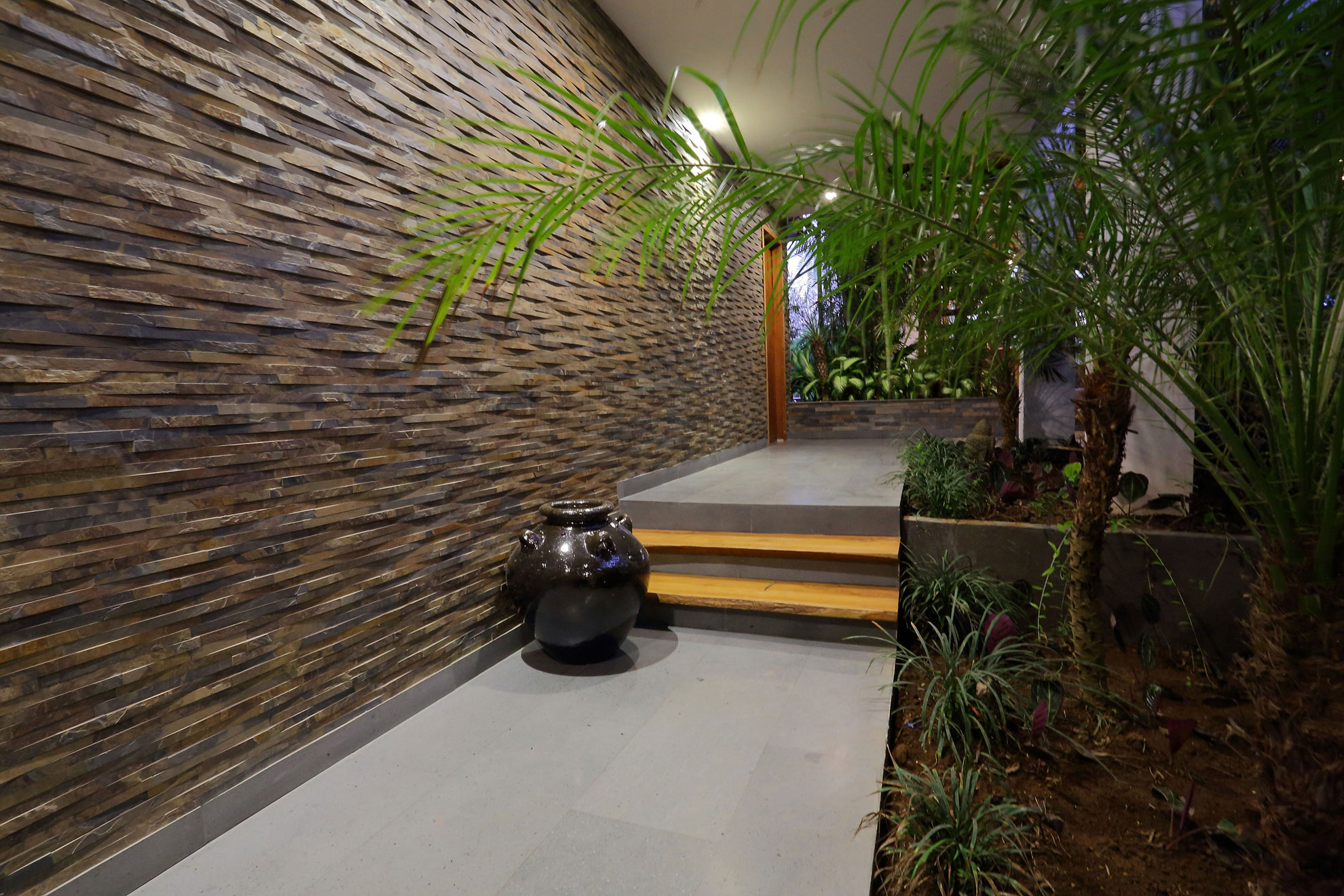
Custom Cladding
As displayed by Island Stone‘s portfolio of work, boutique manufacturers can also help architects build an array of custom stone clad walls that are reminiscent of intricate mosaics. If this is something that you are interested in, consult with specialty manufacturers such as Island Stone, early on in the design process.
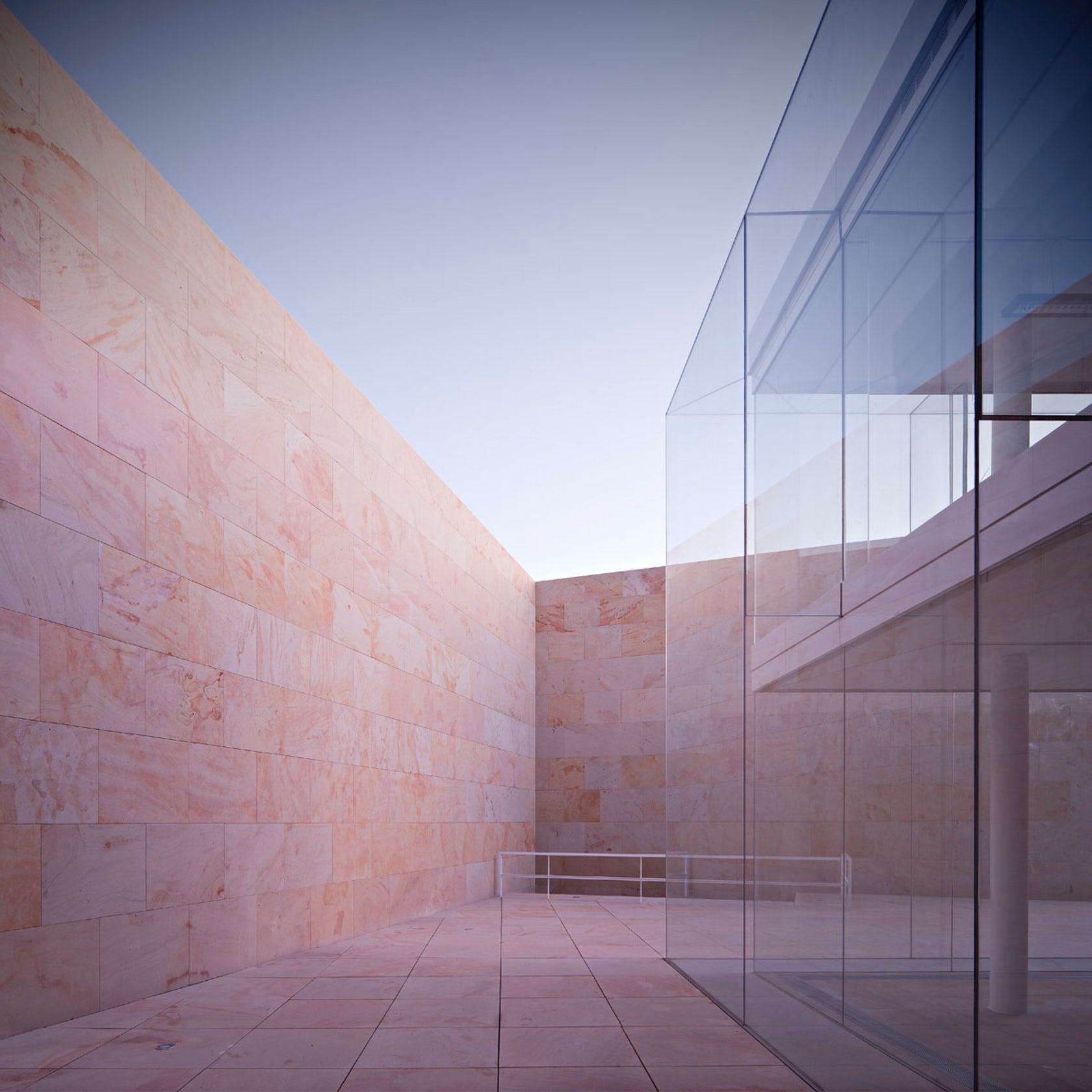
Material Categorization
Many types of natural stone are excellent cladding materials. These can be broadly divided into three geological groups: sedimentary rocks such as limestone and sandstone, metamorphic rocks such as slate and marble and lastly, igneous rocks such as granite.
In selecting the best type of stone, architects must consider a number of factors including appearance, intended use, size of the project, and most importantly, the composite that will provide adequate strength and durability.
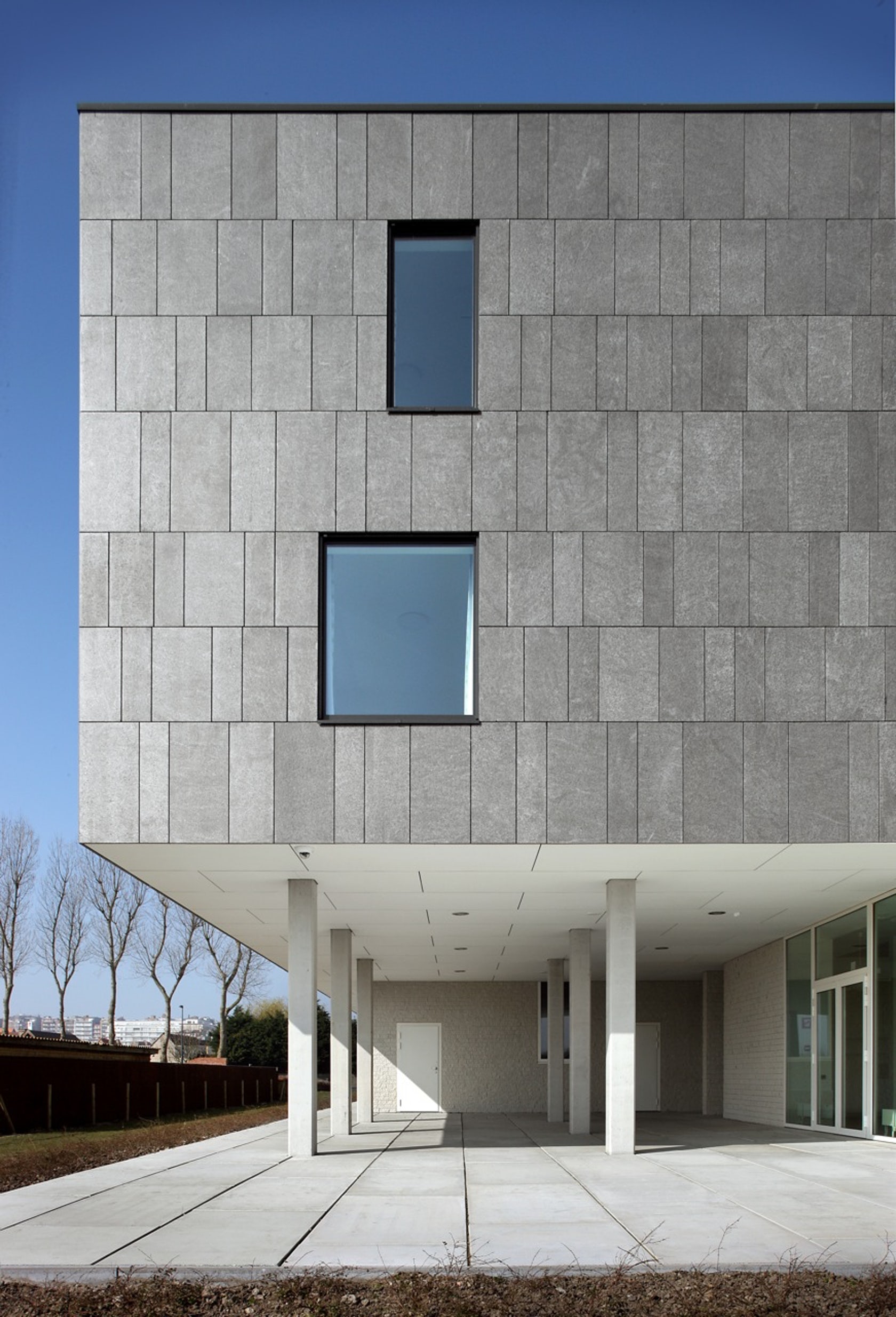
Basalt
Basalt is a dark, blue-gray volcanic stone that may be used for both internal and exterior wall cladding. Basalt has a very fine grain and is the most popular form of volcanic rock used in building. One notable feature of basalt is its extremely high insulating capabilities.
Bluestone
Bluestone is the commercially used name for a number of building stone varieties. Including basalt and limestone, this category includes at least twenty different types of stone with a blue tint.
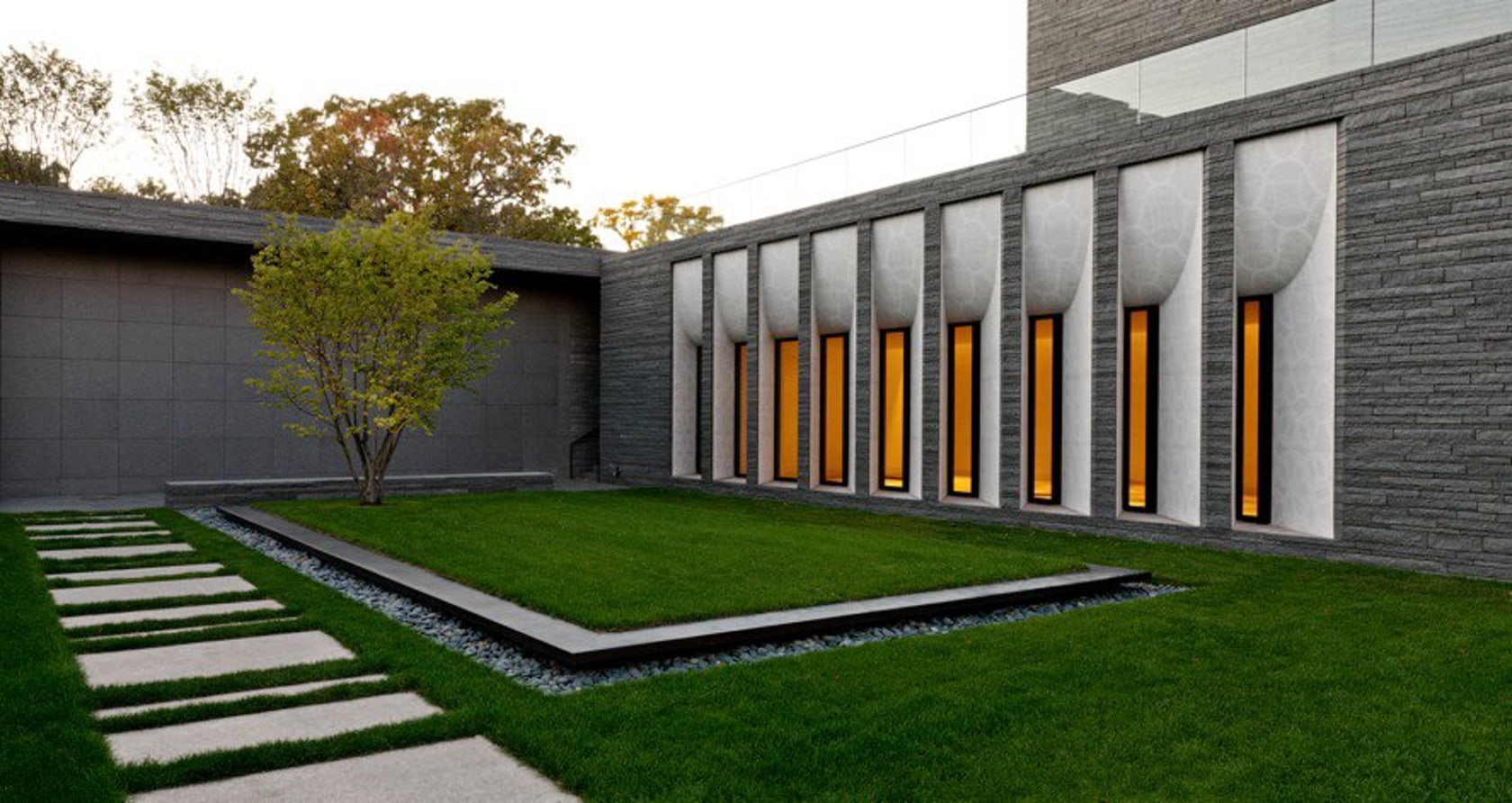
Granite
Granite is a coarse-grained stone made up of interlocking crystals. It is one of the most widely occurring stones in the world and an extremely popular building material for both interior and exterior cladding applications. Granite is known for its durability and the permanence of its color and texture.
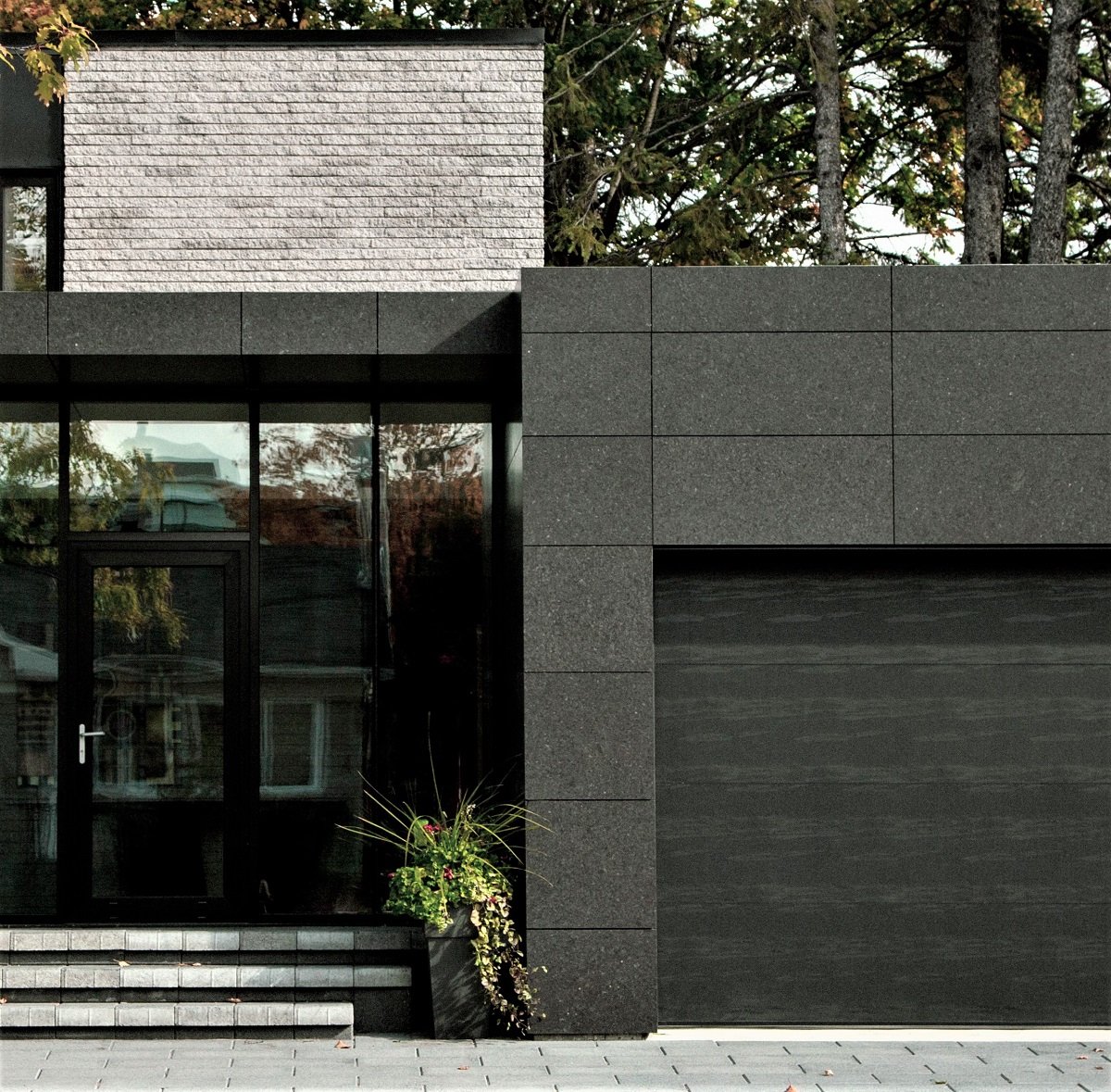
Jerusalem Stone
One of the oldest stones used in building construction, Jerusalem stone is made from a pale form of limestone and dolomite. This type of stone is extremely dense and far more resistant to weathering than other limestones. As a result, Jerusalem stone is very common as an exterior cladding material.
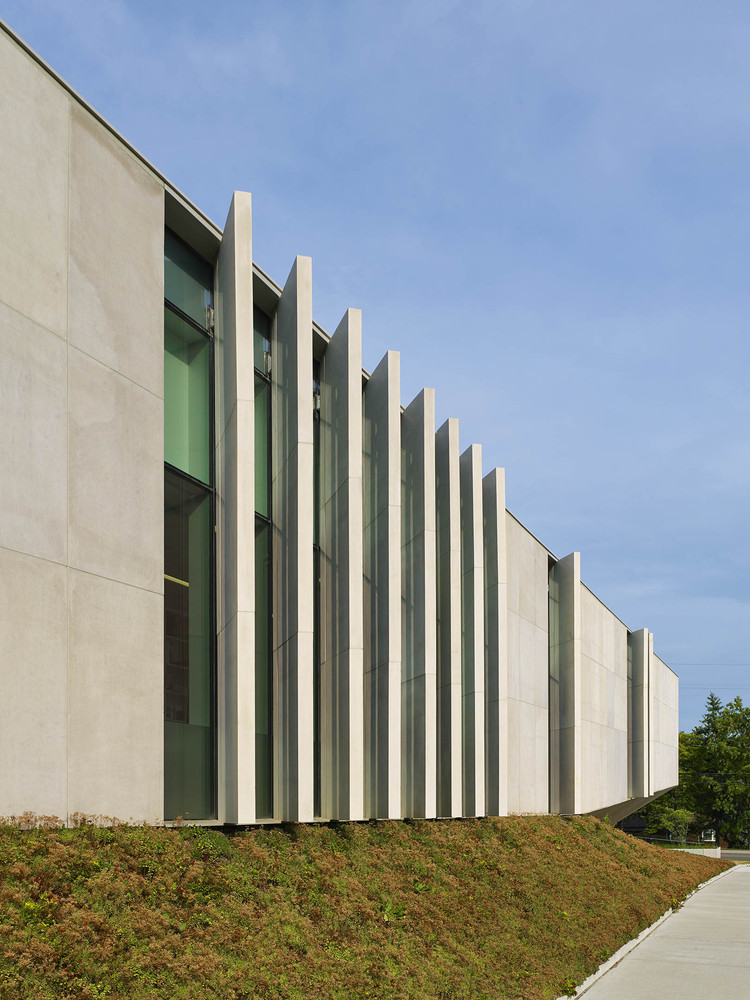
Limestone
Limestone is lauded for its aesthetic diversity and flexibility. In color, limestone ranges from pure whites, beiges, to subtle browns with hints of blue. In texture, limestone ranges from creamy and soft to chunky and harshly veined. Limestone is a great option for building faces because it can be carved and shaped relatively easily.
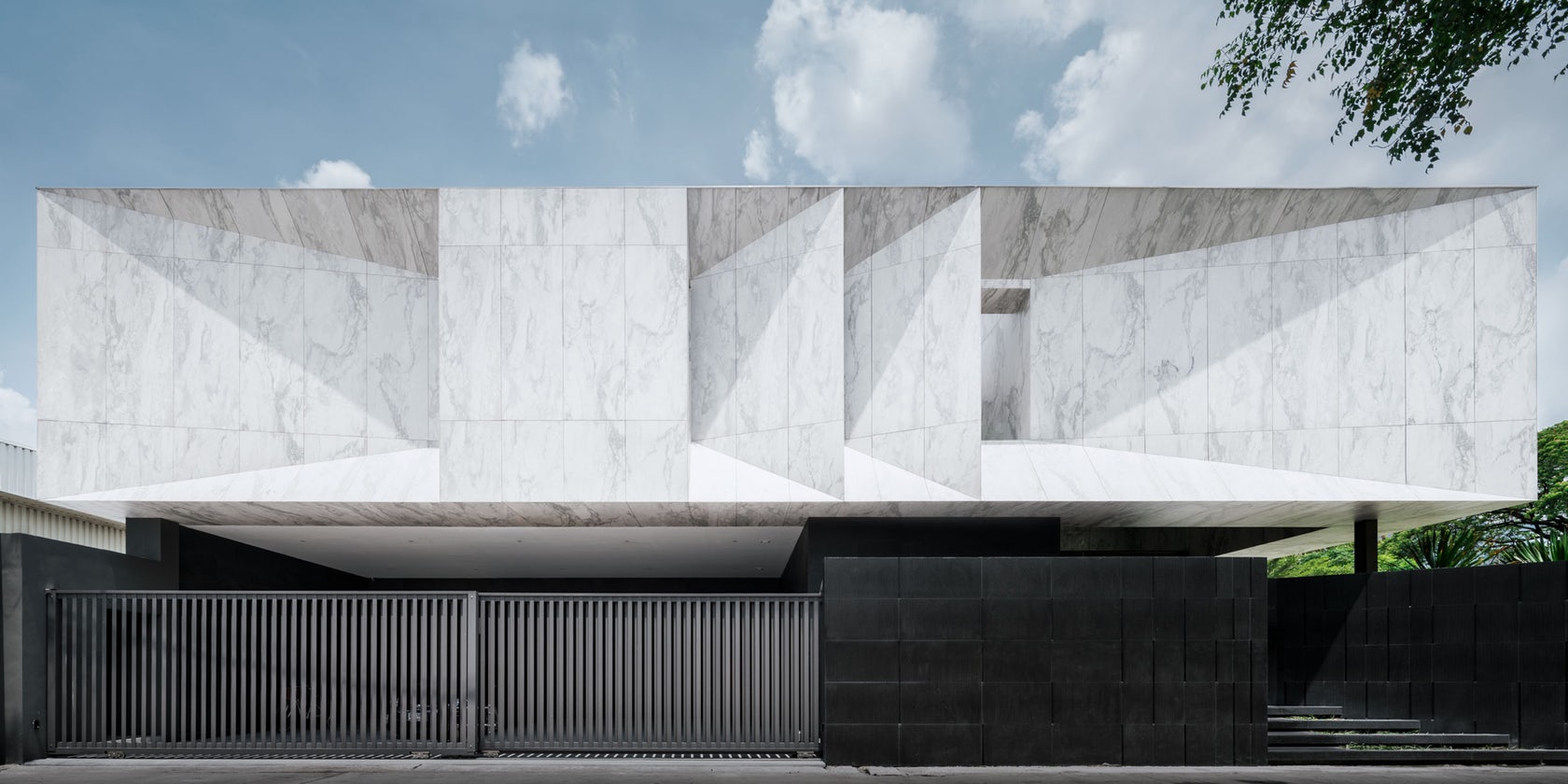
Marble
Marble has had a rich and tumultuous history. Once the premier material in the architect’s palette, the difficulties of building with marble and the development of cheaper alternatives have led to a steady decline in its use as a façade treatment.
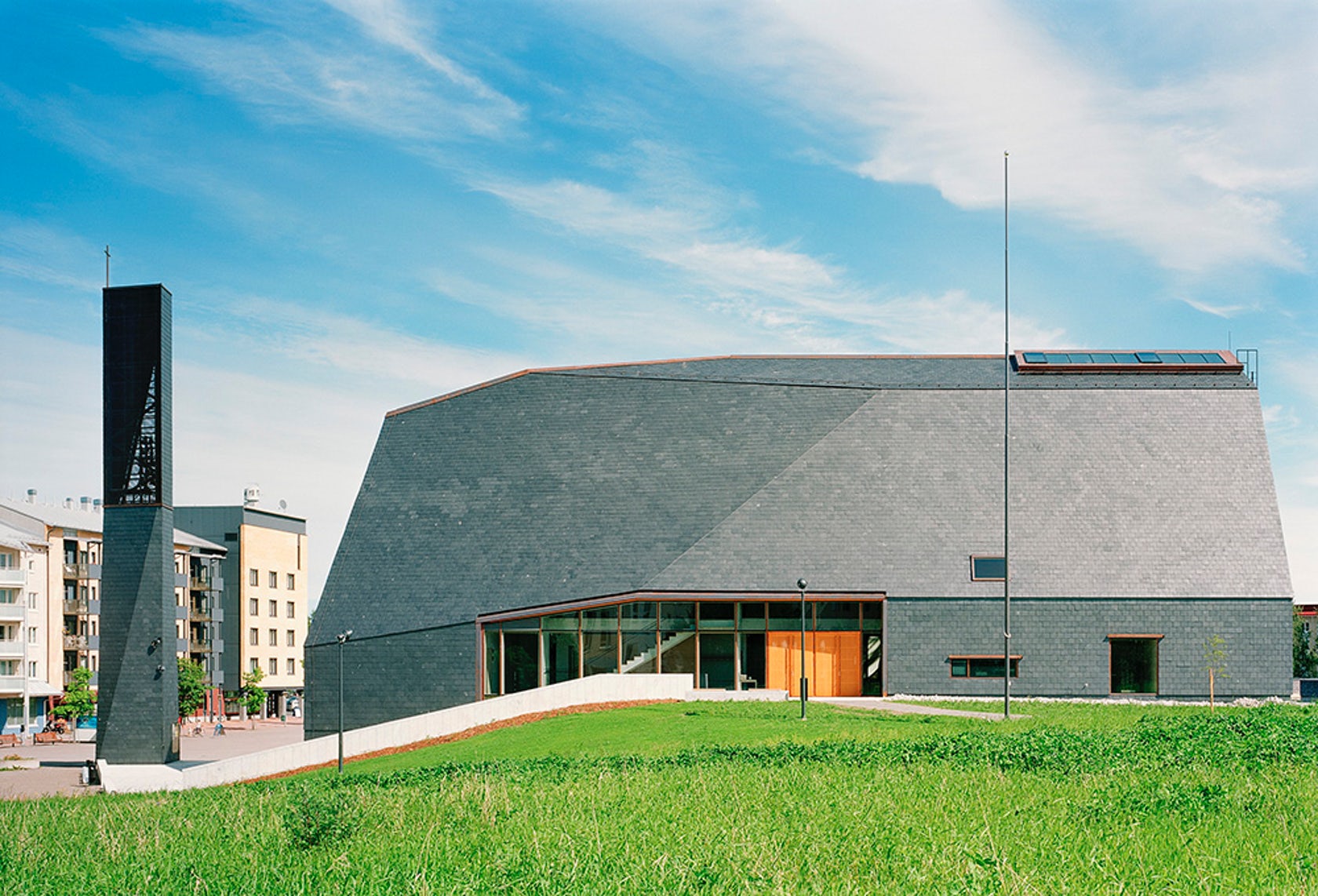
Slate
Slate is a fine-grained metamorphic stone that is considered to be an optimal building material for both interior and exterior cladding. Due to its elegant and sophisticated appearance, high durability, excellent water resistance and low maintenance, slate has become a stand-out architectural element in modern design.
Small samples from your manufacturer will show the typical colors and textures of these aforementioned types of stone. However, they may not properly elucidate the natural variations that are present in large-format stone panels. For this reason, it is extremely beneficial to examine precedents and case studies that harness stone from the particular quarry that you are interested in.
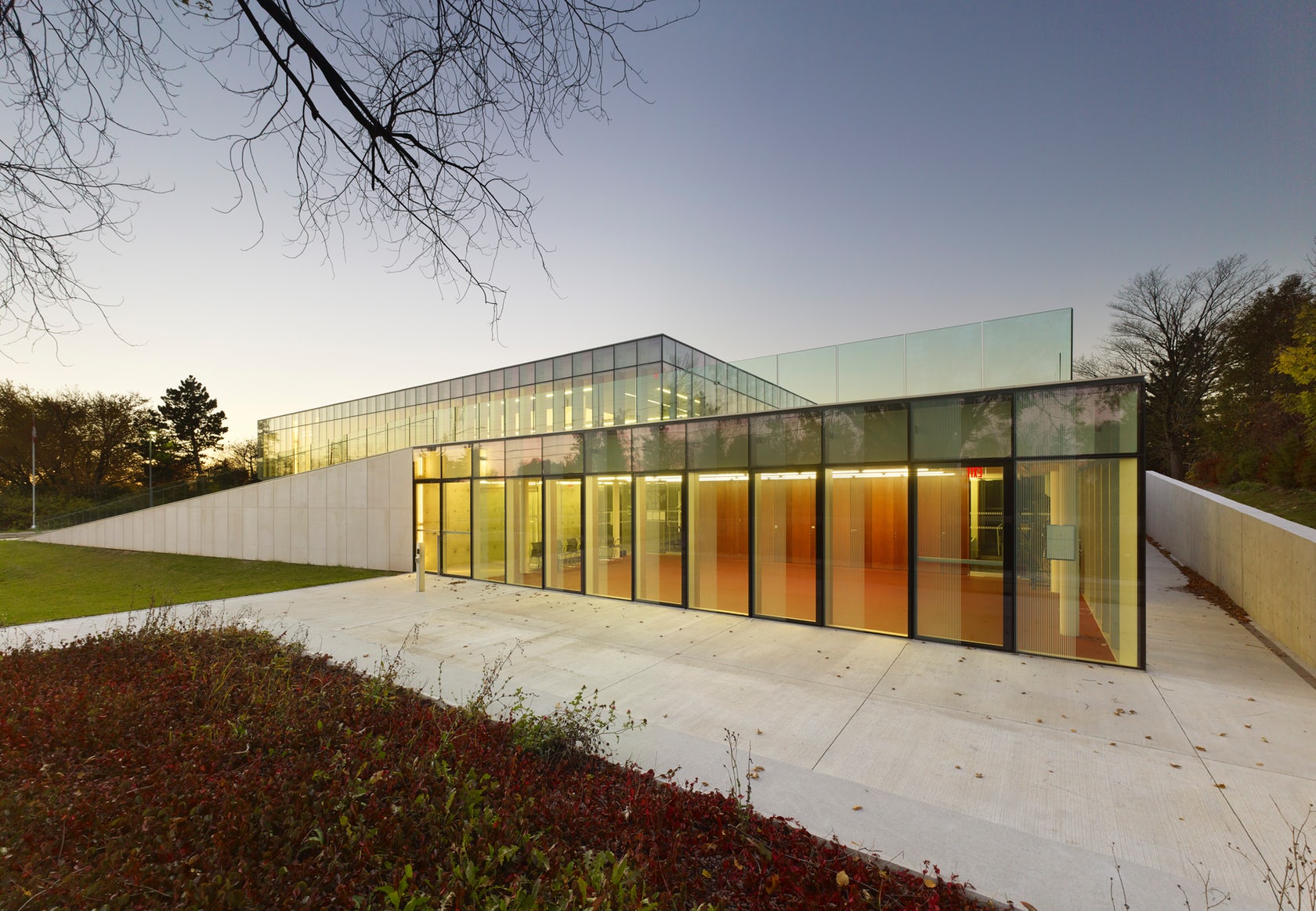
Aesthetics
The aesthetics of stone are affected by how the stone is extracted, processed and finished.
Color
The hue of natural stone varies greatly, as discussed in previous sections of this page. Basalt is often dark grey, Jerusalem stone comes in mild colours such as off-white and golden-pink, granite comes in hundreds of colours, and limestone spans from white to black, with grey being the most common. If you have a certain hue in mind, speak with your manufacturer early on to see what colours are available and appropriate for your project.
Pattern
Patterns and veining of various stones, like colour, vary greatly due to natural variance. In rare situations, you may be able to order stone specifically for your project. Speak with your manufacturers to obtain a feel of the possibilities available.
Texture and Finish
The texture of stone is also extremely varied, ranging from coarsely fragmented to finely grained and completely smooth. Some of the most common terms that you will come across in your material search are polished, honed and sandblasted.
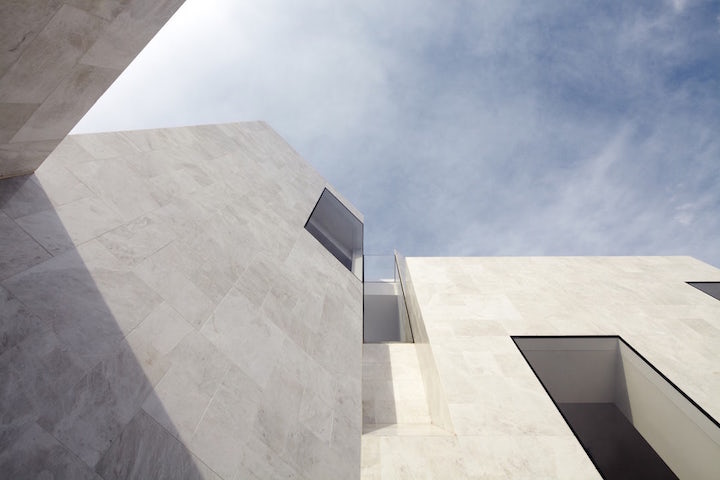
A honed finish indicates that the stone has been ground down to a smooth and consistent surface. With stones such as granite and marble that possess a natural shine, a honed finish means that the stone’s gloss will be removed, leaving a matte surface. In general, honed finishes are easier to maintain than polished surfaces.
Sandblasted means that the surface of the stone has been treated with a high pressure blast of silica. This creates a rough but tidy finish that is both finely textured and granular.
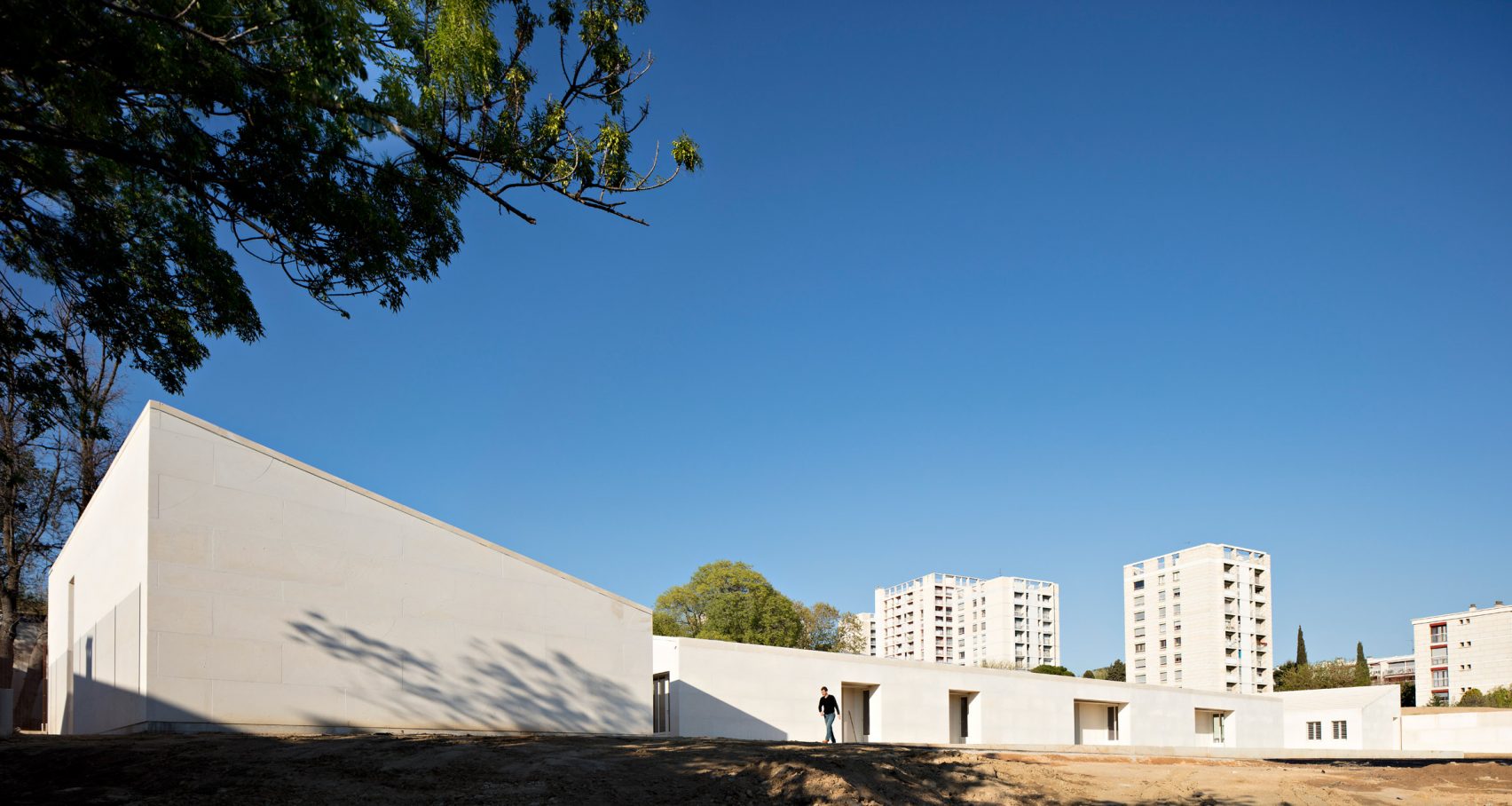
Performance
Sustainability
Stone has a comparatively low environmental effect since it requires very little processing to become useable. You simply cut it. And after you’re done with it, it may still be recycled in its natural state. However, it is critical to recognise the environmental effect of producers moving stone from other regions of the world worldwide.
Durability
Stone is incredibly robust and thick, making it ideal for cladding applications. Keep in mind that some stones, such as limestone, are more susceptible to weathering. Granite, on the other hand, tends to keep its colour and pattern for a very long period. As a result, before incorporating a particular stone into your project, carefully examine its weathering qualities.
Installation
In most cases, installing natural stone requires experienced engineers. Leading up to the execution of your project, make sure that the fabrication team is well suited to safely carry out on-site construction.
Insulation
Stone cladding can be easily coupled with thermal insulation products that are designed to reduce the heat loss or heat gain of a building envelope. The insulation should be non-combustible, rot and vermin proof and non-absorbent. In designing the insulation layer, strive for the lowest possible U-Value.
Maintenance
It is important to keep natural stone clean in order to avoid cracking over time. In addition, certain stones may break down or become slick with the oxidizer deposits. In advance of construction, consult with your manufacturer to understand the maintenance requirements of a particular stone.